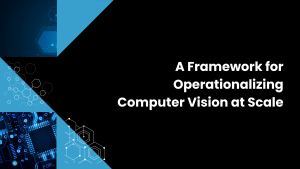Everybody is a potential enterprise application developer, given the right tooling abetted by a workbench that enforces development best practices.
Though the term “citizen developer” implies someone lacking in professional discipline, that’s not necessarily the case in practice. Many knowledge workers are skilled professionals who will apply by-the-book enterprise development practices if they’re given sufficient guidance, preferably inline to the tooling at their disposal.
The democratizing potential of low-code development tools
Wikibon sees augmented programming as a key enterprise development trend, referring to model-driven, visual, and other “low code” approaches for accelerating developer productivity. Augmented programming drives automated code generation through high-level development abstractions, especially the use of machine learning and other artificial intelligence approaches.
Vendors have converged on the augmented programing arena from practically every direction. This is due to the strategic importance of making their core developer users more productive and also to ensure that they are well integrated into enterprise DevOps and governance workflows.
Owing to its longtime focus on model-driven development, Pegasystems Inc. has been at the forefront of augmented programming for many of its 36 years of existence. Within its Pega Platform, the vendor has long provided a sophisticated set of tools for low-code, model-driven, visual development.
Pegasystems is a longtime industry visionary vendor on these and other intelligent automation topics, with a keen emphasis on low-code tooling. So it was no surprise this week when Pegasystems prioritized this theme in the product announcements at its annual developer conference in Las Vegas.
Pegasystems builds enterprise-grade controls into low-code tools
Before more than 5,000 attendees in Las Vegas, Pegasystems launched Enterprise Low-Code Factory, a new development tool that is due to be available by the end of third quarter of 2019 and which is an integral component of the vendor’s AI-powered omnichannel Pega Platform. Enterprise Low-Code Factory gives a new generation of non-traditional, lower-skilled enterprise developers the tools to boost their productivity without sacrificing the software quality, consistency or compliance features needed to stand up their apps as production-grade enterprise assets.
The tool accomplishes the latter by embedding the following framework of controls — also known as “guardrails” — for guiding enterprise-wide app development and operationalization by users of all skill levels:
- Accessibility controls: Guardrails must be integral to the developer workbench experience. In this regard, Enterprise Low-Code Factory’s dashboard gives users quick access to the apps they use most, the apps they are building and the ecosystem of approved apps built by others to enable better software reuse, as well as links to education resources.
- Governance controls: Guardrails require consistent, repeatable enterprise governance workflows and decisioning responsibilities. The new solution gives stakeholders the ability to define approvals over which apps get greenlighted for development, what features they should include, which apps get released under what circumstances, who gets to use the apps and who can revise them over time.
- Reuse controls: The fast path to compliance is always ensuring that developers reuse the latest, greatest, company-approved development templates. In this regard, the new solution presents developers of all experience levels with pre-defined, easily modifiable and always up-to-date app templates for quick deployment.
- Team controls: Engagement in a broader DevOps environment is key to developer compliance, and this is integral to the Enterprise Low-Code Factory. The new solution supports collaboration and a continuous feedback loop among developers, information technology personnel and other enterprise stakeholders.
- Skills controls: Staying on the same page in education and training is key to enterprise compliance in all areas. Enterprise Low-Code Factory provides unified access to educational resources for building users’ skills in low-code tools, and techniques., including specially-designed Pega Academy courses, video tutorials, help documents and Pega Community articles.
Pegasystems’ continued growth in sales, revenues and business adoption will depend on positioning Enterprise Low-Code Factory and its other augmented programming tools as productivity accelerators for developers of all skill levels. Likewise, it will need to expand the range of use cases — including real-time sentiment analysis and robotic process automation — that this tool can support.
With that in mind, Wikibon was impressed with other announcements that Pegasystems made this week that deepen its low-code use cases and bring other components of its diverse solution portfolio into a low-code model-driven development framework. Separate from Enterprise Low-Code Factory, Pegasystems made announcements that allow citizen developers to apply additional guardrails for building various types of intelligent apps in a model-driven low-code environment:
- Customer empathy controls: Pegasystems announced the forthcoming Customer Empathy Advisor. This new solution — which will be available for all Pega Customer Decision Hub clients near the end of 2019 — helps enterprises to scalably boost “empathy” metrics in AI-assisted customer conversations. The new tool uses an AI-powered dashboard to analyze empathy metrics — including relevance, suitability, value, context, intent and mood — within an organization’s customer engagement channels. It enables engagement analysts within a broader app development practice to pinpoint which next best actions create the most trust from customers and which hurt it. The solution provides an on-screen slider so that stakeholders can easily adjust empathy levels and see the impact the change has on relevant key performance indicators. It also enables developers to simulate and predict the monetary impact of more empathetic customer-engagement strategies on their bottom lines. And it enables developers to automatically deploy the best empathy strategies through Pega Infinity and its suite of customer engagement software, all of which are powered Pega Customer Decision Hub.
- AI DevOps controls: Pegasystems launched new APIs and connectors for plugging Amazon Web Services and Google AI DevOps platforms into Pega’s existing AI. The new Real-Time AI Connectors, which will be rolled out through the end of 2019, provide the Pega customers with the ability to build, train and deploy machine learning models in fully managed third-party cloud services, starting with Amazon SageMaker, Google Cloud Machine Learning Engine and Google DialogFlow Text Analyzer. The integrations allow Pega customers to take advantage of the accessibility, governance, reuse, team, and other controls that are baked into those third-party offerings. The connectors give customers the flexibility to complement Pega AI with new deep learning and machine vision capabilities and alternative machine learning and NLP services from other vendors. These connectors build from existing APIs for OCR and speech-to-text processing that bring other capabilities into the Pega environment.
Chief Wikibon takeaways and caveats from PegaWorld 2019
These latest announcements significantly deepen Pegasystems’ differentiation in the vast low-code development tool arena, and also in the DevOps segment focused on tools for continuous integration and continuous deployment of enterprise apps into cloud environments. With a “land and expand” strategy foremost, Pegasystems has built scalability into these embedded guardrails, enabling customers’ small single-function apps, built in Pega tools, to grow into multifunction environments for omnichannel, real-time customer engagement.
Though Wikibon is positive on Pegasystems’ offerings and strategy, we have concerns about its ability to innovate and partner effectively in the intelligent automation market.
First, Wikibon is disappointed that Pegasystems failed to align explicitly this low-code strategy to its established products for chatbots and virtual assistants, mobility, and robotic process automation. These technologies — along with cloud-native technologies such as Kubernetes and containers — are important components in enterprise intelligent edge strategies, which Pegasystems has so far not addressed comprehensively in its roadmap.
Also, we were hoping that Pegasystems would have incorporated a stronger data science DevOps workbench of its own into its low-code strategy. Considering that dozens of vendors now offer such tools in their various portfolios, it was astonishing that Pegasystems hasn’t at least acquired one of many strong machine learning pipeline automation offerings on the market and begun the process of integrating with its low-code and app factory tools.
Furthermore, we were surprised that Pegasystems didn’t announce any further integration with its cloud partners, most notably, Amazon Web Services, under its “Cloud Choice” program. Pegasystems has achieved impressive uptake of its own managed cloud service.
Though the flexibility that it offers to host customer deployments of its solutions on any public or private cloud platform is impressive, it would have made sense to discuss how — or whether — it plans to support hybrid and multicloud deploymentsof its digital transformation portfolio. More enterprises are adopting multicloud strategies, and will increasingly evaluate vendors on their support for managing complex data, workload, application, and networking capabilities across these infrastructures through a single visibility and control plane.
As it addresses these strategic challenges going forward, Pegasystems’ should retain its core focus on helping customers balance experience metrics against the bottom-line impacts of intelligent process automation. Pega’s focus on 360-degree journey modeling, and then using that to automate development and deployment of the enabling applications, is a key connective tissue in its go-to-market strategy. It is a key differentiator for the vendor for helping customers to align all their front-end engagement channels with backend processes in a unified enterprise architecture.
Pegasystems’ customer-centric vision is embedded in its corporate DNA. Here’s what Leon Trefler, senior vice president of global customer success at Pegasystems, had to say on Cube Conversations in May 2018 on a wide range of omnichannel customer engagement topics, including contextual next best action, journey modeling and robotic process automation:


